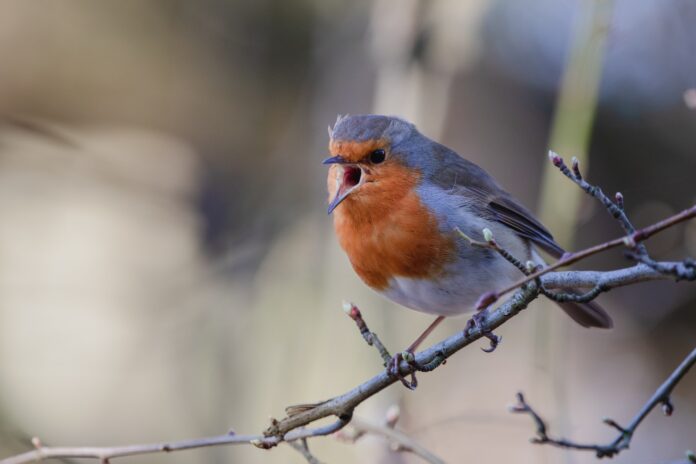Human singers aren’t the only ones who have to warm up their voices — according to a new study, songbirds need time to get their practice in, too. The study, which analyzed recordings of Adelaide’s warbler birds in Puerto Rico, found that these songbirds spend the dawn hours warming up for their morning performances.
The research was led by Juleyska Vázquez-Cardona, a PhD student in the Birdsong Lab at the University of Lethbridge, and published in Behavioral Ecology.
Most of us are familiar with the dawn chorus: early-morning singing from songbirds that can make it difficult to sleep in. These daybreak performances likely have to do with attracting mates and defending territory, but scientists still have a number of questions about how and why the dawn chorus functions the way it does.
“There are many hypotheses as to why this happens and one of those is that [the songbirds] are warming up their voices during that period,” Vázquez-Cardona said in a press release.
“[O]ur study was to look at how well they sing their songs using some performance measures, and then how their performance changes throughout the morning.”
To do this, the researchers recorded dawn choruses from Adelaide’s warblers: a species of songbird found in southwestern Puerto Rico. Their recordings started before sunrise, when the birds hadn’t yet started singing, and lasted continuously throughout the dawn chorus as well as an hour after it had ended.
The researchers then analyzed the recordings based on how fast the birds were singing, and how long they rested between different notes. They defined a performance as “improving” when the birds started singing faster and resting less. Since singing requires a lot of energy, these fast performances are indicative of stronger, fitter birds which are more likely to be desirable mates.
The team found that the birds’ songs started out slower and quieter in the earliest hours of the morning, but progressed rapidly throughout the dawn chorus as they had a chance to warm up. The songs then levelled off as the sun rose and the dawn chorus ended.
The next steps, the authors say, are to investigate whether these warm-ups help the birds when it comes to competing for mates and defending their homes. Adelaide’s warblers are known to be territorial birds, and singing may be one way they express this.
“[W]e want to take this further and look at the function of a strong vocal performance,” Vázquez-Cardona explained.
“One thing we’ll be looking at is how they use their vocal performance relative to the time of an aggressive encounter with a neighbour bird who is trying to get into that territory. We also need to figure out whether the females prefer high performance songs.”








































